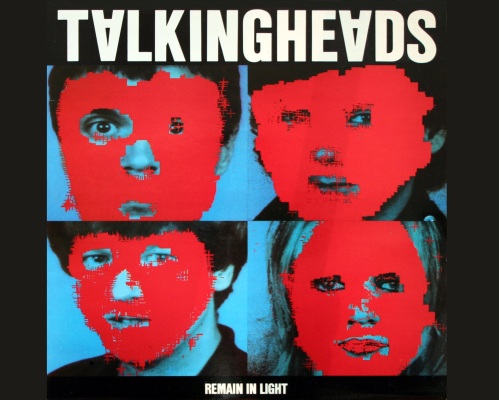
This month on my own blog, Dystopian Dance Party, we’re highlighting our favorite women artists to celebrate Women’s History Month. So I thought I would take the opportunity to cross-post a few pieces that Andre’s readers might be interested in, starting with today’s post on Tina Weymouth and the Tom Tom Club.
New York’s Talking Heads were many things, but as far as I’m concerned, they were most importantly the greatest white funk group of all time–and a lot of the credit belongs to their stoic, diminutive bassist, Tina Weymouth. Her unique style married P-Funk-inspired elasticity to the jerky rhythms of art-punk groups like Pere Ubu; she was also largely responsible, along with her husband and Talking Heads drummer Chris Frantz, for introducing the rest of the band to the emergent sounds of hip-hop in the early ’80s. Basically, if you liked watching David Byrne dance in that big gray suit in Stop Making Sense, you can thank Tina Weymouth: without her influence, the beat he was dancing to would have been a lot less funky.
You can also thank Weymouth, and Frantz, for making Stop Making Sense happen in the first place. The story goes that they made their own 1981 album as Tom Tom Club when Byrne indicated he was quitting Talking Heads; it was only after he heard their lead single, “Genius of Love,” that he decided to reunite with the group and record 1983’s Speaking in Tongues. It’s easy to see why: “Genius” is one of the funkiest, most minimalist grooves ever set to wax, pairing Adrian Belew’s deconstructed Jimmy Nolen chicken-scratch with some heavily phased, dub-style percussion by Uziah “Sticky” Thompson, and a whole heap of New Wave quirk courtesy of the Tom Tom Club themselves. There’s a reason why the main riff has been sampled by everyone from Diddy and Mariah Carey to Grandmaster Flash (pictured above with Weymouth in 1982).
But there’s another reason why I’m highlighting “Genius of Love” for Women’s History Month, and that’s because it’s, well, unabashedly girly. We often fall into the trap of praising women artists for transcending feminine stereotypes, which can become its own kind of aesthetic cage: in order to be taken seriously, Women in Rock (or whatever) have to be rawer, tougher, and ballsier than their male counterparts. “Genius of Love” isn’t raw, tough, or ballsy; the vocals, by Tina and her sisters Laura and Lani, are sweet and feminine, and the lyrics are all about how much she loves her boyfriend. Even the music video, by future Max Headroom creators Rocky Morton and Annabel Jankel, looks like the kind of thing an especially talented girl might doodle in her notebook during middle school. It’s a celebration of an oft-scorned “feminine” aesthetic, years before Taylor Swift and the “poptimism” movement made perceived girliness into a critical badge of honor, and it’s detectable as an influence in everyone from Swift to Sleigh Bells to our own Women’s History honoree, Grimes.
If you liked this post, remember to check in with Dystopian Dance Party for the rest of March–there’s a lot more where it came from! Thanks for reading!

